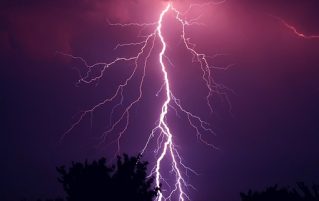

The oddly “clean” smell that sometimes comes during a storm is that of ozone!! Lightning strikes split diatomic oxygen molecules in the atmosphere into individual oxygen atoms. These can then combine with other oxygen molecules to form ozone. Ozone has a pungent smell, sometimes described as a similar smell to chlorine.We know lightning strikes are very fast, but chemical reactions can happen at many different rates, They can take years, like iron rusting, or be over in seconds, like an explosion.
A chemical reaction is a process where two different substances or elements are mixed together. They then undergo some sort of chemical change to become a different substance altogether. Chemical reactions don’t just occur during science experiments, they are actually happening all around you every day.
GCSE scientists, you need to know about rates of reaction and the factors that affect them. Try our new guide “How to work with Rates of reaction: Part 1”. Information on collision theory, and how different factors affect rates of reaction is included. You will also find questions to try, alongside answers to check your understanding.
Click the picture below to see the guide.
If you found this useful and think you would benefit from some additional help, please contact us.
